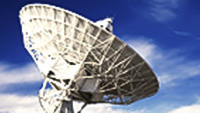Search and order online
100 days of Cosmic Kiss
- Video Online only
- Title 100 days of Cosmic Kiss
- Released: 18/02/2022
- Length 00:04:40
- Language English, German
- Footage Type Documentary
- Copyright ESA - European Space Agency
- Description
English - 100 days of Cosmic Kis
On 11 November 2021, ESA astronaut Matthias Maurer was launched to the International Space Station for his first mission, Cosmic Kiss. Around 100 days later, we reflect on some highlights from space.
Matthias flew to the Station on a SpaceX Crew Dragon alongside NASA astronauts and fellow first-time fliers Kayla Barron and Raja Chari, and NASA spaceflight veteran Tom Marshburn. Collectively known as Crew-3, they were welcomed as members of Expedition 66 by Commander Anton Shkaplerov, cosmonaut Pyotr Dubrov and NASA’s Mark Vande Hei.
While in orbit, Matthias is supporting over 35 European and many more international experiments. The outcomes of these experiments will advance our knowledge in areas ranging from human health to materials science, physics, Earth observation, technology development and more.
Matthias is expected to spend approximately six months in orbit and there are many more highlights to come. Find out more about the science he’s supported to date in this 100 days of Cosmic Kiss science round-up.
This article is also available in German language.
Access the related broadcast quality video material.
German - 100 Tage Cosmic Kiss
Am 11. November 2021 startete der ESA-Astronaut Matthias Maurer zu seiner ersten Mission "Cosmic Kiss" zur Internationalen Raumstation ISS. Rund 100 Tage später blicken wir auf einige Höhepunkte aus dem Weltall zurück.
Matthias flog an Bord eines SpaceX Crew Dragon zusammen mit den NASA-Astronauten und Erstfliegern Kayla Barron und Raja Chari sowie dem NASA-Raumfahrtveteranen Tom Marshburn zur ISS. Gemeinsam als Crew-3 bekannt, wurden sie von Kommandant Anton Shkaplerov, Kosmonaut Pyotr Dubrov und NASA-Astronaut Mark Vande Hei als Mitglieder der Expedition 66 begrüßt.
Im Orbit unterstützt Matthias über 35 europäische und viele weitere internationale Experimente. Die Ergebnisse dieser Experimente werden unser Wissen in den Bereichen Humanmedizin, Materialwissenschaft, Physik, Erdbeobachtung, Technologieentwicklung und mehr vorantreiben.
Matthias wird voraussichtlich etwa sechs Monate in der Umlaufbahn verbringen, und es werden noch viele weitere Höhepunkte folgen. Bleibt dran und erfahrt mehr über seine Mission auf der Cosmic Kiss Missions-Webseite der ESA.


